RAPAPORT...
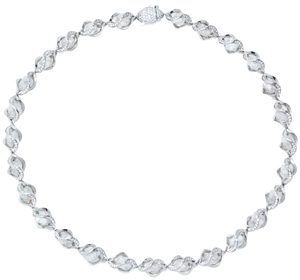 |
| Crossworks |
The key promise to consumers from Forevermark is that our diamonds are beautiful, rare and ethically sourced,” says Charles Stanley, president of Forevermark U.S. Inc., based in Stamford, Connecticut, in explaining how De Beers Forevermark brand differs from other branded diamonds in the market. “Forevermark really demonstrates to the consumer that there is an eternal assurance — there is a real value we bring to our brand because it represents the top 1 percent of the world’s diamonds.”
De Beers Forevermark was launched in the U.S. at the beginning of October and will be available in more than 750 retail stores nationwide by the end of 2011. Its entrance into the U.S. market certainly will not come as a surprise to most consumers since Forevermark has been making a splash in the national media and U.S diamond industry since summer 2011.
Inscription
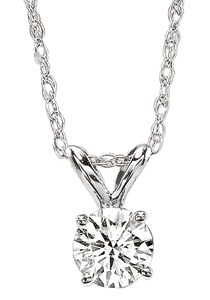 |
| Pluczenik |
Though it cannot be seen by the naked eye, a laser inscription is branded into every Forevermark diamond. To Stanley, this type of product branding is pivotal as “the Forevermark inscription fundamentally is the visualization of the promise — it is a key part of the brand to help the salesman with the sale.”
Moreover, the inscription gives Forevermark a modern vibe that distinguishes it from other brands, and appeals to a younger generation of buyers. “Fundamentally, the inscription creates a sense of ‘wow’ and excitement, and today’s modern consumer is very accepting of technology,” explains Stanley.
Ethically Sourced
The promise of ethical sourcing, Stanley notes, is not only a large part of the brand’s appeal, but also a cornerstone of its image. “What supports the brand is the concept of sustainability. The diamonds are selected for their inherent beauty, but we use De Beers 120-year expertise to go beyond the basic 4Cs to also take into account diamond sourcing and sustainability.”
De Beers ability to abide by this standard goes hand in hand with its promise to ensure that each Forevermark diamond is unique and rare. By not commoditizing its Forevermark diamonds and by handpicking only the best ones for this brand, the company can meticulously trace each stone’s origins and travels. “We don’t stand on the basis that any one cut or proportion makes a very good stone, but there are minimum requirements in terms of the 4Cs, as well as ethical sourcing. Each diamond is a snowflake; we treat each differently,” says Stanley.
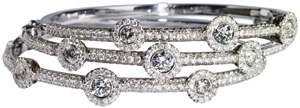
|
Red Carpet Collection
|
The majority of Forevermark diamonds, however, do come from areas where De Beers has already established sustainable mining projects. “We know where each diamond comes from in terms of its rough production,” continues Stanley. “Not only do the mining projects abide by Kimberley Process (KP) standards, but they also contribute to the community’s well being. In Botswana, for example, we are leading the area in advances in health and education programs.”
While Forevermark does partner with global suppliers in acquiring some stones, almost all of these suppliers get their diamonds from De Beers mines. “We selected suppliers who happen to be DTC [Diamond Trading Company] sightholders, although the diamonds do not have to come from DTC mines only, but can also come from other approved sources,” says Stanley, while noting that around 90 percent of the Forevermark diamonds do, however, come from DTC mines.
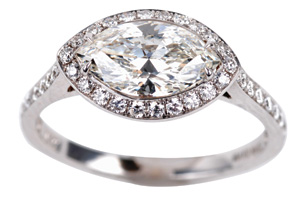
|
Trau
|
A vital part of Forevermark’s promise of ethically sourced diamonds, Stanley notes, is to “make sure our supply partners adhere to our supply-side standard for ethical and sustainable production.” To accomplish this,
De Beers employs Geneva-based global certification and auditing firm SGS, which has more than 1,250 offices and laboratories around the world. Together with SGS, Forevermark subjects its suppliers to periodic reviews, as well as spontaneous audits to ensure strict adherence to its standards. “And if we have any suspicions,” declares Stanley, “our suppliers can be audited immediately.”
Unique Relationships
While Forevermark advertises its diamonds as unique and rare, it is really the company’s unique business model that sets it apart from the rest of the industry. “We like to call the Forevermark model a partnership,” says Stanley. “It involves three partners: our company, which selects and grades the diamonds, then promotes them to consumers; our partnered manufacturers, who we call ‘Forevermark diamantaires,’ whose responsibility is to maintain the integrity of the diamond and our licensed Forevermark retailers, who are the third partners in the chain.”
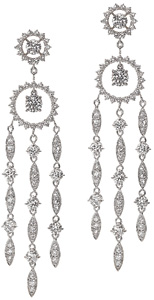
|
Dali
|
Though they are rigorously audited for strict adherence to the brand’s sustainability rules, Forevermark’s diamantaires have complete freedom in designing and marketing the brand’s diamonds. “Forevermark’s diamantaires can supply our diamonds as loose or finished pieces — we brought in diamond manufacturers to provide retailers with an array of designs.”
In selecting its diamantaire partners, Forevermark focused on a handful of manufacturers whose reach extends throughout the country and who had potential for growth and broad brand exposure. “The rationale for selecting our U.S.–based diamantaires is to identify suppliers who have good and broad relationships with retailers and good size and quality of goods,” says Stanley.
Forevermark is just as diligent in picking retailers as manufacturers, because they are an “equally and vitally important part of the partnership — they need to convince consumers that Forevermark is worth the price. Overall, we need to work with partners who support the concept, who are used to selling brands. Primarily, we have targeted upper-end, independent retailers. What we are not interested in is a merchant who is very price-point oriented.”
These upper-end, independent Forevermark retailers are primarily brick-and-mortar stores. While Forevermark is aware of the growing impact of online retailers, it is still a firm believer in the importance of the jewelry store experience. “This is not to say that retailers can’t feature Forevermark in the digital world,” clarifies Stanley, “but, ultimately, we want to sell Forevermark in stores.”

|
A. Jaffe
|
Though partnering with a broad array of suppliers and retailers throughout the nation to distribute its brand might strike some as counterproductive to its positioning of Forevermark as unique and rare, Stanley asserts that the current model is the most effective way for the brand to permeate all sectors of the market. “We are not trying to set up retailers to heavily compete with each other, but instead are offering a broad-base supply that is critical to the Forevermark brand.”
And therein lies the uniqueness of the Forevermark model, according to Stanley. “Forevermark is a shared diamond brand that is differentiated by companies creating private forms of the label — it’s not one-suit-fits-all, but it’s one concept that allows everybody to express themselves in different ways. Offering a broad-base supply is not disadvantageous to a retailer or supplier. It’s a new type of brand, and it’s highly flexible, so it can be sourced from a number of different places and designed in many ways. Forevermark is a shared diamond brand that is differentiated by companies creating private forms of the label. We have people who are able to serve different niches and environments.”
Promotion
At the end of August 2011, De Beers appointed three regional sales executives to oversee Forevermark’s entrance into the U.S. market, picking executives with sales backgrounds at Rolex, Hearts on Fire and Lazare Kaplan International. By taking a focused and aggressive approach to the U.S. market, Forevermark hopes to replicate the success it has had establishing the brand in other countries, beginning three years ago. “We first launched Forevermark in Asia in May 2008, initially in Hong Kong, Japan, then China and, more recently, India,” explains Stanley.
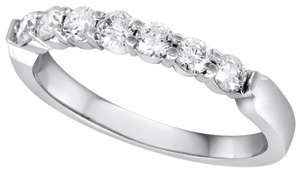
|
SES Creations
|
A particularly telling example of Forevermark’s success in global markets has been its experience in India. Launched in January 2011 in the country’s southern city of Bengaluru, the brand soon expanded to Mumbai and New Delhi, and will be available in Chennai, Hyderabad and Kolkata by the end of 2011. In five years,
De Beers has plans to expand the brand to more than 35 Indian cities — a growth pace it hopes to replicate in the U.S.
While it might be difficult to build such growth quickly within the fragile U.S. economy, Stanley expresses optimism that Forevermark can ride out the country’s current low consumer confidence and lackluster growth trends. “We will transcend the blips and blushes of the economic cycle,” he declares, adding, “Demand for good-quality diamonds will always remain high.”
Critical to Forevermark’s success in the U.S. is the aggressive promotion and advertising campaign spearheaded by Sally Morrison, chief marketing officer of Forevermark U.S. Inc. “It was really important to introduce this brand to consumers before paid advertising began,” says Morrison. “Essentially, we were seeding before the launch.”
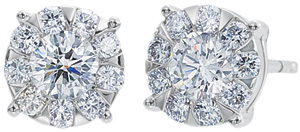
|
Memoire
|
In late July, for example, Forevermark hosted a three-day event in New York City aimed at spreading awareness of the brand. The event included special viewings of Forevermark’s diamonds by GiltCity, a U.S. shopping website, as well as Forevermark diamond masterclass sessions, which educated viewers on the craftsmanship and selection process that go into each Forevermark diamond. In late November, Forevermark launched three of its diamond collections in ten Neiman Marcus stores throughout the country and the stores are hosting Forevermark Diamond Journey events that are similar to the Diamond masterclass sessions. At the same time, the brand launched the “Forevermark: The Promise” app, which helps users locate Forevermark retailers in the U.S. and gives them a chance to win an array of prizes, including a trip to Africa. Forevermark diamonds were also worn at both this year’s 68th Golden Globe Awards and 63rd Primetime Emmy Awards by celebrities Elizabeth McGovern, Anna Faris and Rashida Jones.
To insulate themselves from the shaky current economy, Forevermark is focusing its efforts on parts of the diamond industry that are much more resistant to market fluctuations. “We are focusing initially on bridal rings, ear studs and those core bridal pieces that are more recession resilient and much more at the core of the industry,” says Morrison. “The bridal category, for example, is a cultural imperative. When times are hard, people will fall back on things that are meaningful to them, like relationships. In time, however, our aim is to expand our designs into more jewelry categories.”
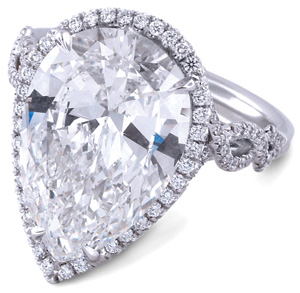 |
| Premier Gem |
At the same time Forevermark focuses on core jewelry categories, it will also focus on two distinct types of consumers. Morrison explains: “The first is the consumer with a household income over $175,000 who already owns more than four stones. That is the consumer we have historically targeted; they follow diamonds into diamonds. The second target is the bridal and prebridal consumer with a household income of over $75,000.”
Though Forevermark is rolling out a campaign directed at these two groups, it is not addressing both groups at the same time. Indeed, an important part of Forevermark’s advertising is timing, and trying to appeal to one demographic in advance of another maximizes brand awareness and sales.
“We speak to women first to drive desire,” explains Morrison, expounding on her company’s strategy to ramp up holiday 2011 sales of Forevermark by exposing affluent female consumers to the aesthetics of the brand long before the holiday season. “We have a very impactful print campaign that began at the end of October and ran for about three to four weeks in female-targeted publications.”
Forevermark targets its male audience later on, emphasizing aspects other than the brand’s beauty, according to Morrison. “In terms of speaking to a male audience, it’s more about the rationale of the brand — the quality, rarity, sourcing. These approaches all came together with noise and excitement around Thanksgiving as we started to focus on the holiday weekend.” This “noise” includes a host of magazine advertisements, online advertisements, public relations events and a “virtual try-on” application, which uses video recognition technology to allow consumers to “wear” a Forevermark ring or necklace of their choosing.
Looking Forward
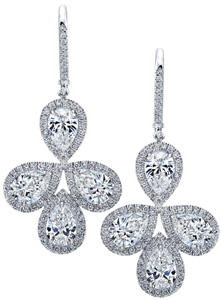
|
Rahaminov
|
Despite the aggressive 2011 promotion campaign, Forevermark does not plan to reap all its rewards until late in 2012. “We see these designs and product initiatives as core to our strategy of providing incremental demand to get this ‘beacon product’ going. Of course, it takes a lot of thought — and about 18 months,” says Stanley. De Beers wants Forevermark to be the beacon holiday gift of the 2012 holiday season worldwide. “We are working on that now, not just in the U.S., but also around the global market — basically working toward announcing it as a beacon product for December 2012 to early 2013. Right now, though, we are encouraging our partners to keep making their own designs.”
Article from the Rapaport Magazine - December 2011. To subscribe click here.